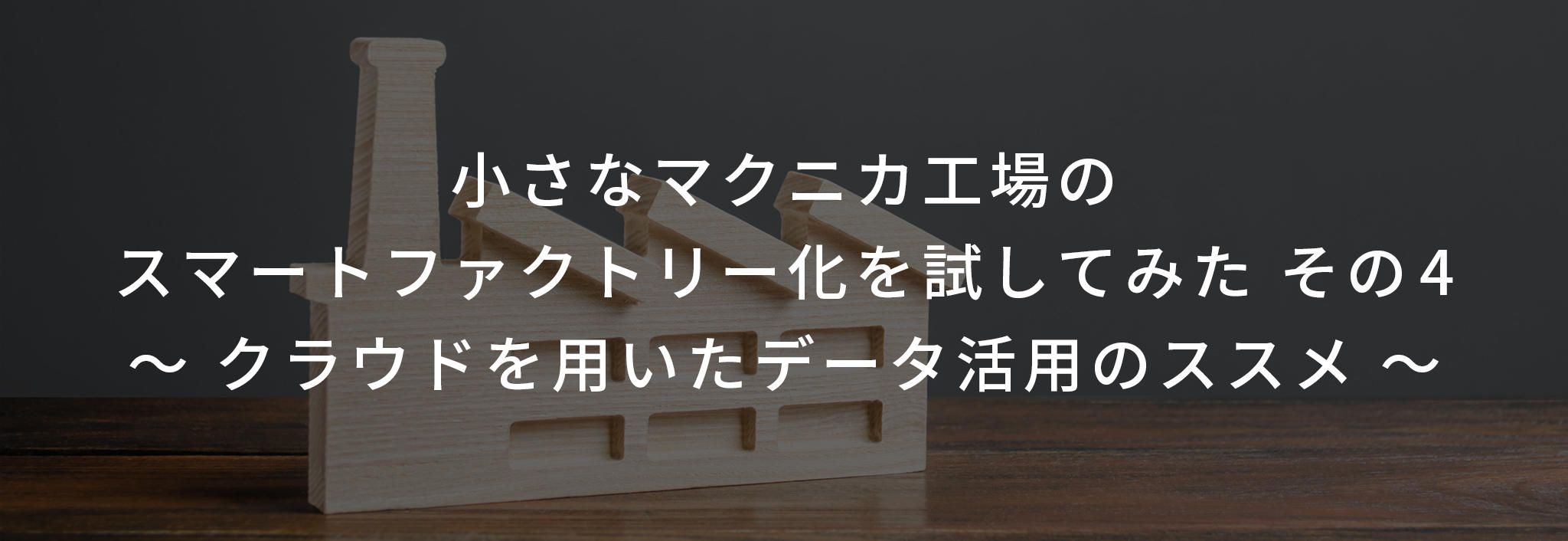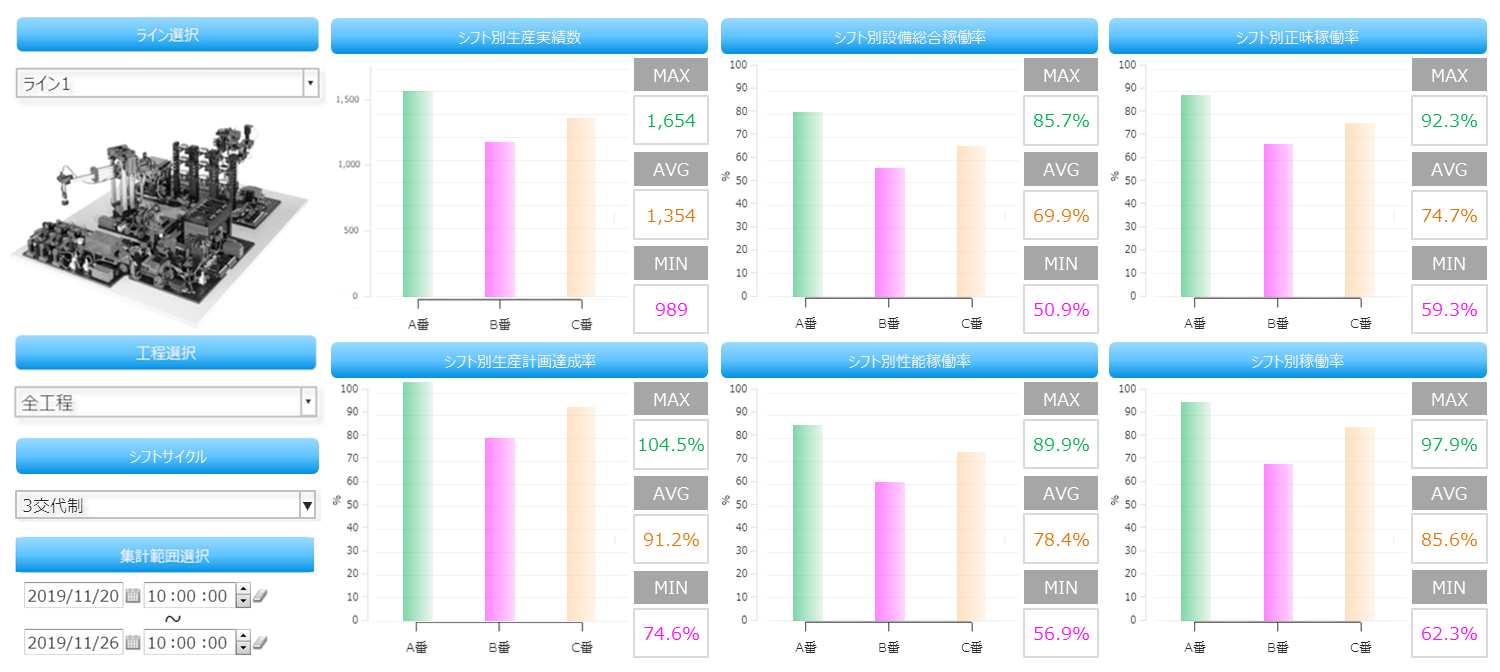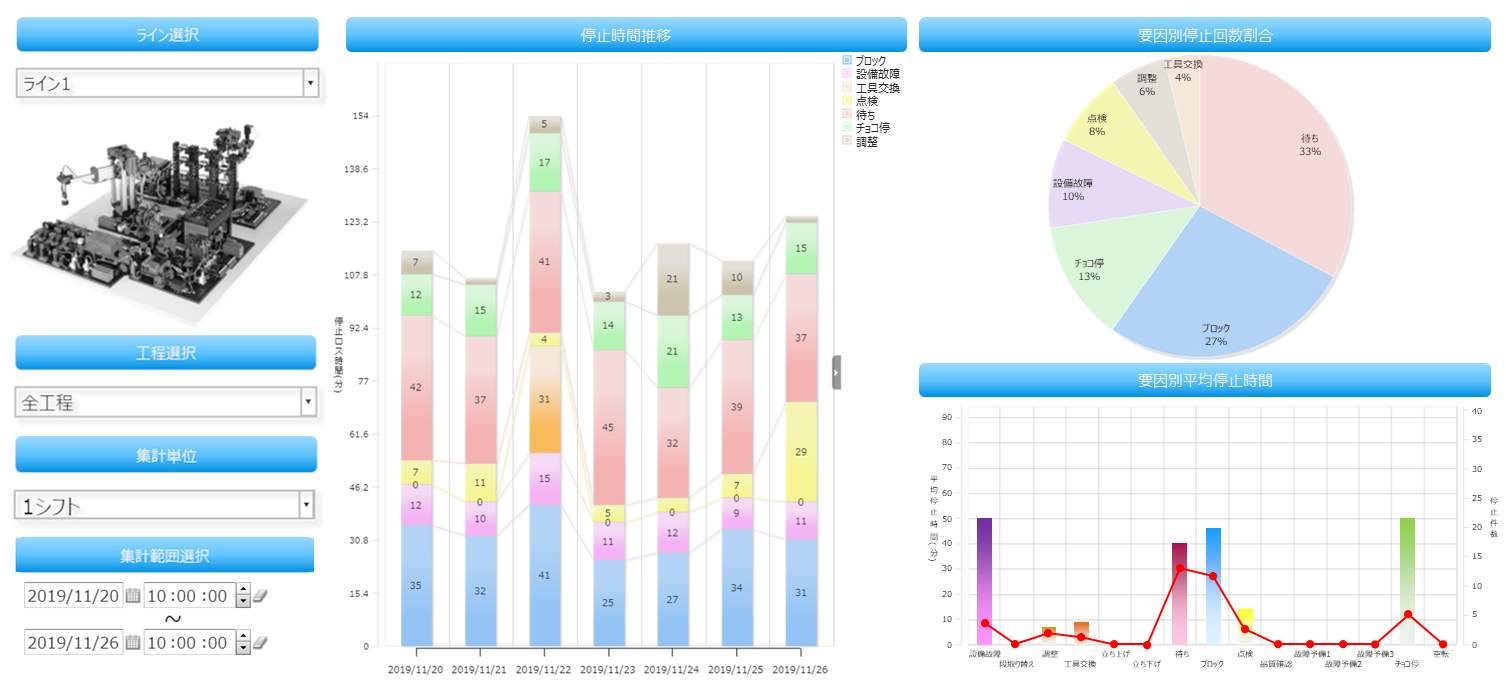
This article is recommended for those who
- Those who are considering and introducing data collection and utilization of factory equipment
- For those interested in Macnica 's data collection solutions
How long does it take to finish reading this article
5 minutes
Introduction
Hello! My name is Sakuraba from Macnica Innovation Strategic Business Headquarters.
Last time, we introduced visualization of collected data on-site as one way to utilize the collected data.
This time, I would like to talk about utilization using the cloud.
Why is it necessary to move the data infrastructure to the cloud?
As I mentioned last time, visualizing data on the shop floor is useful for decision-making and improvement activities on the production floor, but that alone is not enough when considering improvements in manufacturing for the entire factory.
In order to grasp the status of a manufacturing line or an entire factory that consists of multiple facilities and processes, it is necessary to integrate and centrally manage the information of each facility and process.
In addition, when grasping and analyzing the production status of the entire line or the entire factory, not only instantaneous information at the present time but also past production results are required.
In this way, we believe that building and using a cloud environment is essential for accumulating data collected from multiple data sources and utilizing it for analysis and improvement activities.
Of course, it is also possible to accumulate and utilize data in a so-called "on-premises environment" operated by the company, and I think that many customers in the manufacturing industry used to operate in an on-premises environment.
Certainly, an on-premises environment has advantages, such as being able to customize the system to make it easier for your company to use, and making it easier to link and integrate with your company's internal system.
However, as the amount of data owned by companies continues to increase these days, maintaining the environment rather than investing a lot of time and large initial costs in building an environment within the company and continuing to manage it on-premises over a long period of time.・We believe that using a cloud environment, which does not require management and can flexibly expand resources, is more efficient because it allows us to spend time on data analysis and improvement activities based on the analysis results, which should be our primary focus.
I also tried it at Macnica 's demo factory! ~Data accumulation in the cloud~
So, this time, I tried to accumulate data on the production status of the demo factory in the cloud.
Last time, we used OEE (Overall Equipment Effectiveness), an index that was calculated during on-site visualization, to be uploaded to the cloud via OPC UA (*1) and displayed as time-series data (Fig. 1). .
(*1) A communication protocol for exchanging data between industrial devices.
▼ Figure 1: OEE of demo factory and related parameters
This time, the source of the accumulated data is only one line of OEE-related parameters, and the data itself does not change, so it may be difficult to convey, but the accumulated data for a certain period is displayed in chronological order. By doing so, you can see trends in parameters over time, find correlations between multiple parameters, and lead to various analysis and improvement activities.
Analysis of factors for improvement based on data
One way to utilize the data stored in the cloud is to visualize it in the cloud and analyze the factors that emerge from it.
If you want to see the data of one facility or process in real time, you will need to visualize it on the site side.
On the other hand, if you want to check the data of multiple facilities and processes collectively, or if you want to check not only current values but also past data, visualization based on data accumulated in the cloud is required. You can
For example, it is possible to check the production volume and operating rate for each shift (Fig. 2), and to check the change in stoppage time and number of times for each cause of equipment stoppage (Fig. 3).
▼Figure 2: Equipment operation status screen
▼ Figure 3: Stop cause screen
By creating such a screen, you can not only visualize the factory status, but also perform factor analysis from there.
For example, if the production quantity is less than the target production quantity for several days in a row, what do we know?
・From the outage factor transition graph, it can be seen that the outage time is extremely long only for those few days in the last month
・If the breakdown was 60% setup change and 20% adjustment work, it took more time than usual for the worker to make the setup, so adjustments occurred before and after that, which caused the production quantity to fall short.
The above is just one example, but by being able to grasp the situation numerically rather than on-site sensations and images, we can quantitatively observe the priority and scope of impact, and the sharing of information and explanations within the company is more convincing. increase.
Also, if we can grasp the current situation, it will be easier to promote countermeasures and improvement activities.
In the previous example, you can change the production schedule to reduce the number of setup changes, or review the procedures at the time of setup so that the setup changes themselves can be performed smoothly.
Toward further utilization of smart factory data
This time, we talked about storing and visualizing data collected from manufacturing sites in the cloud.
At actual manufacturing sites, I think that analysis using AI technology is being considered for cases where it is difficult to build a cloud environment, and for data utilization that has progressed beyond visualization.
We provide problem-solving Services & Solutions for customers in various industries, including the manufacturing industry. Please contact us.

